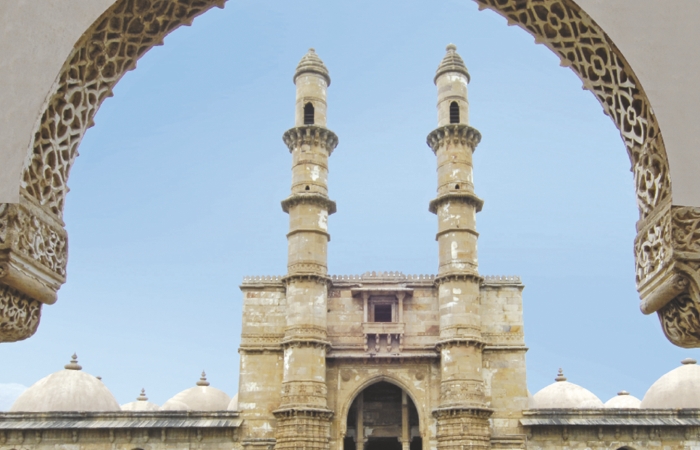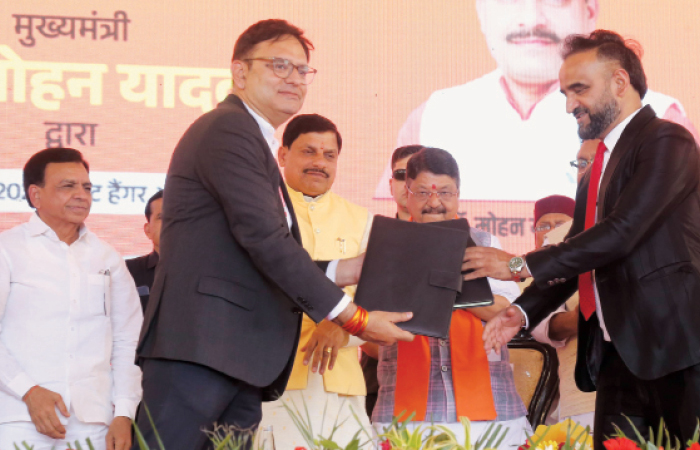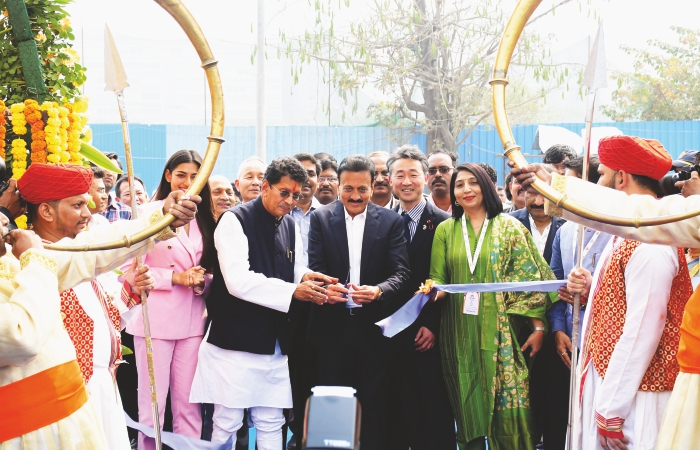After Dholavira’s inclusion in Unesco World Heritage Sites list, Gujarat is now home to four World Heritage Sites. These include Dholavira (prominent Indus Valley Civilization site), Champaner near Pavagadh, Rani ki Vav in Patan and the city of Ahmedabad, frequently researched by students because of its Gandhian legacy, have made it to the list.
The state of Gujarat offers a wide range of amazing attractions for tourists to enjoy the journey of unmatched traditions and culture of this land. Gujarat is gifted with locations that are significant in terms of natural beauty and spirituality. The recognition of the immense value of these heritage sites will add new dimensions of tourism to explore and enjoy. Today, Gujarat has a complete package of natural, spiritual, and heritage destinations to get ecstatic with their magnanimity.
Champaner-Pavagadh Archaeological Park
This is a heritage site located in the Panchmahal district and is known as the Champaner-Pavagadh Archaeological Park. The site provides a spectacular view of settlements from prehistoric to medieval times. The area was once ruled by the Khichi Chauhan Rajputs during the 13th century, which was gradually shifted to the Turkish rulers of Gujarat in 1484. Sultan Mehmud Begda decided to make this place a capital of Gujarat and many buildings were constructed during that time. Mughal emperor Humayun captured the place in 1535 and gradually the Champaner lost its glory in time. Today, the heritage site consists of the remains of fortifications, palaces, religious buildings, residential precincts, water-retaining installations, and the living village of Champaner. It is a beautiful amalgamation of Hindu-Islamic architecture that is sophisticated and authentic.
Hindu temples, mosques, tombs, and stepwells are the major attractions of the place. The presence of the Mahakali temple atop the Pavagadh hills draws thousands of devotees. At Champaner, one of the most important attractions is the Citadel, which has a mosque built in the 16th century. The Jami Masjid at the east gate has fine stone carvings, beautiful pillared corridors, a spectacular courtyard, and multiple domes that offer amazing views to people. Other prominent mosques include Shaer Ki Masjid, Kevda Masjid, Nagina Masjid, Lila Gumbaj ki Masjid, and Minar ki Masjid. All these heritage monuments have a beauty of their own, which is incredible to observe. The infrastructure is finely designed with geometrical precision and aesthetic beauty.
Some important aspects of the place
- Most of the parts of the city are buried and unexcavated.
- 14th century temples and water-retaining installations are present.
- The Archaeological Survey of India works with the Champaner-Pavagadh World Heritage Area Management Authority to manage the affairs of the property.
- In the year 2004, the site was included in UNESCO’s World Heritage Sites list.
Rani ki Vaav
Vaav refers to the setwells created at specific times in history to quench the thirst of people. Rani ki Vaav is located in Patan (Gujarat), which was built by Rani Udaymati in 1063 to commemorate her husband, King Bhimdev 1. She was in lineage from the Solanki dynasty, and documentation from a Jain monk refers to the work of the stepwell being finished 20 years after it was commissioned in 1063. Stepwells are known for their grandeur, and Rani ki Vaav is also a work of fine craft. The sheer beauty of the art and architecture, the great detailing in every corner, the geometrical precision and complex structures with great science behind them, makes one bow down to the devoted human beings who brought such a masterpiece into reality.
Rani-ki-Vav has seven levels of stairs to reach the water source. The well has a stepped corridor at ground level, floors with pavilions, and a water tank and well. It has several hundred carved panels, 500 principal sculptures, and around a thousand minor sculptures, all with great aesthetic ambience and fine artwork. It’s a glorious example of how utilitarian work for society can be combined with the fusion of art, aesthetics, culture, and science. The craftsmanship depicted in the preciseness of infrastructure construction and design speaks a tonne about the level of attention paid to detail by people in creating something phenomenal. The Vaav is a classic example of how water resource storage systems were developed in India at various times. It has intricate technology behind its construction to utilise water sources in an effective way for people. With its authenticity, grandeur, and magnanimity of craftsmanship, Rani ki Vaav was included in the World Heritage List in 2014.
The Historic city of Ahmedabad
Ahmedabad is one of the four mega cities of Gujarat which have a vibrant flavour of culture, rich heritage, and contemporary lifestyle. The rich cultural heritage of the city has been preserved in its essence, which boasts of its glorious past in terms of architecture. The traditional Indo-Islamic monuments from the 15th to 17th centuries, the traditional medieval residential infrastructure known as Pols, Puras (streets) and various religious places in Ahmedabad are significant in terms of the city’s inclusion in the list.
The walled city of Ahmedabad was founded by Sultan Ahmad Shah in the 15th century on the banks of the Sabarmati river. The rich architecture of Islamic times is evidently visible in numerous tombs and mosques of the Sultanate period. The Metropolitan also exhibits various important Hindu and Jain temples and other religious institutions. The 28 monuments listed by the Archaeological Survey of India (ASI), one monument listed by the State Department of Archaeology (SDA), and 2,696 important buildings protected by the Heritage Department at the Ahmadabad Municipal Corporation (AMC) showcase the richness of heritage protected in Ahmedabad.
Sidi Saiyed Masjid, Three gates beside Bhadrakali temple, Delhi Gate, Jama Masjid, Various Gates of the walled city, etc. are some of the heritage sites of Ahmedabad to visit. AMC also organises heritage walks to facilitate a visit to various heritage places and inform people about the rich excellence exhibited by the architects of that time. This breathtaking construction and its significance in terms of the multicultural character of the city have ensured its inclusion in the list of UNESCO’s World Heritage sites in 2017. Not to forget, one of the most important attraction in the city is Sabarmati Ashram, which spreads the message of peace and humanity as lived by Mahatama Gandhi ji.
Dholavira
After the inscription of Dholavira on the UNESCO’s World Heritage Sites list in 2021, India entered the Super 40 club for World Heritage Site inscriptions. Dholavira is the 40th World Heritage Site in India, and apart from India, only Italy, Spain, Germany, China, and France have 40 or more World Heritage Sites. Dholavira is the first site of the Indus Valley Civilisation (IVC) that has been included in the list. The site is located in Khadir Bet in Gujarat’s Kachchh district and represents the ruins of an ancient Harappan city.The site was discovered in 1968 by archaeologist Jagat Pati Joshi and excavation began later on to unearth one of the magnificent settlements of ancient times.
Dholavira is an example of a well-established urban settlement which is a walled city with a fortified castle, ceremonial ground, a fortified middle town, and a lower town. On the east and south sides of the forts, a series of reservoirs have been found. During excavations, various artefacts such as beads, gold and copper ornaments, terracotta pottery, seals, etc., and some imported vessels have also been found.
As Ravindra Singh Bisht, the director of the Dholavira excavations, once said, “The kind of efficient system the Harappans of Dholavira developed for conservation, harvesting, and storage of water speaks eloquently about their advanced hydraulic engineering, given the state of technology in the third millennium BCE.” Various reservoirs with sophisticated water conservation designs have been built to store rainwater or divert water from other sources.Apart from the series of reservoirs, the site features hemispherical structures like Buddhist Stupas also, two large grounds, special burial structures and nine gates. A huge signboard with 10 letters written on it in Indus script, a giant bronze hammer, a gold wire, copper bangles, shell bangles, square seals, goblets, etc., have also been found during excavation.
With such a complex and yet technologically substantial water management system, urban planning, multi-layered fortifications, phenomenal drainage systems and, artifacts. Dholavira is an outstanding example of the flowering of human genius thousands of years ago.
 TravTalk India Online Magazine
TravTalk India Online Magazine





